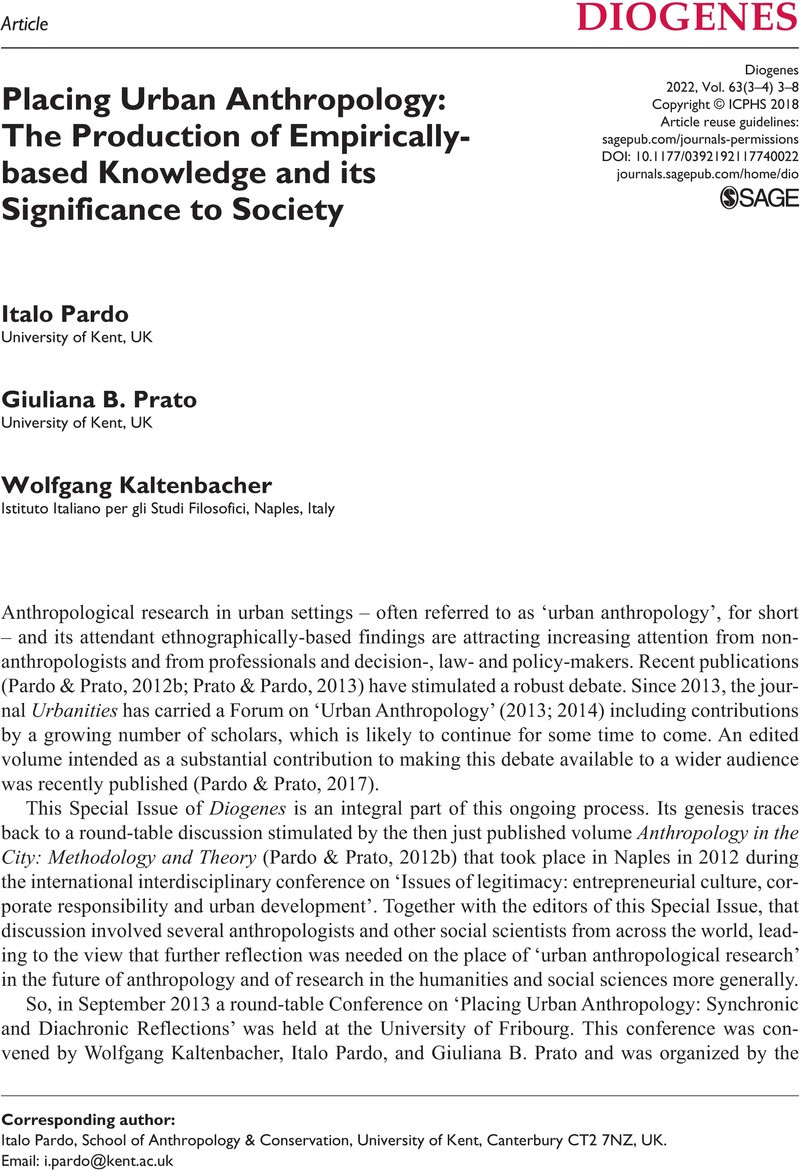No CrossRef data available.
Article contents
Placing Urban Anthropology: The Production of Empirically-based Knowledge and its Significance to Society
Published online by Cambridge University Press: 01 January 2024
Abstract
An abstract is not available for this content so a preview has been provided. Please use the Get access link above for information on how to access this content.

Information
- Type
- Articles
- Information
- Copyright
- Copyright © ICPHS 2018
References
Dumont, L (1951) La Tarasque : essai de description d’un fait local d’un point de vue ethnographique. Paris: Gallimard.Google Scholar
Forum on ‘Urban Anthropology’ (2013) Urbanities, 3(2): 79–132, anthrojournal-urbanities.comGoogle Scholar
Forum on ‘Urban Anthropology’ (2014) Urbanities, 4(2): 84–103, anthrojournal-urbanities.comGoogle Scholar
Hannerz, U (1969) Soulside: Inquiries into Ghetto Culture and Community. New York: Columbia University Press.Google Scholar
Koenig, D (2014) Contribution to the Forum on ‘Urban Anthropology’, Urbanities, 4(2): 86–88, anthrojournal-urbanities.comGoogle Scholar
Pardo, I (1996) Managing Existence in Naples: Morality, Action and Structure. Cambridge-New York: Cambridge University Press.CrossRefGoogle Scholar
Pardo, I, Prato, GB (2012a) Introduction: the contemporary significance of anthropology in the city. In: Pardo, I, Prato, GB (eds) Anthropology in the City: Methodology and Theory. Farnham: Ashgate (now published by Routledge), pp. 1–28.Google Scholar
Pardo, I, Prato, GB, eds (2012b) Anthropology in the City: Methodology and Theory. Farnham: Ashgate (now published by Routledge).Google Scholar
Pardo, I, Prato, GB, eds (2017) The Palgrave Handbook of Urban Ethnography. New York: Palgrave Macmillan.Google Scholar
Prato, GB, Pardo, I (2013) ‘Urban anthropology’, Urbanities, 3(2): 80–110, anthrojournal-urbanities.comGoogle Scholar
Redfield, R, Singer, M (1954) The cultural role of cities, Economic Development and Cultural Change, 3(1): 53–73.CrossRefGoogle Scholar

